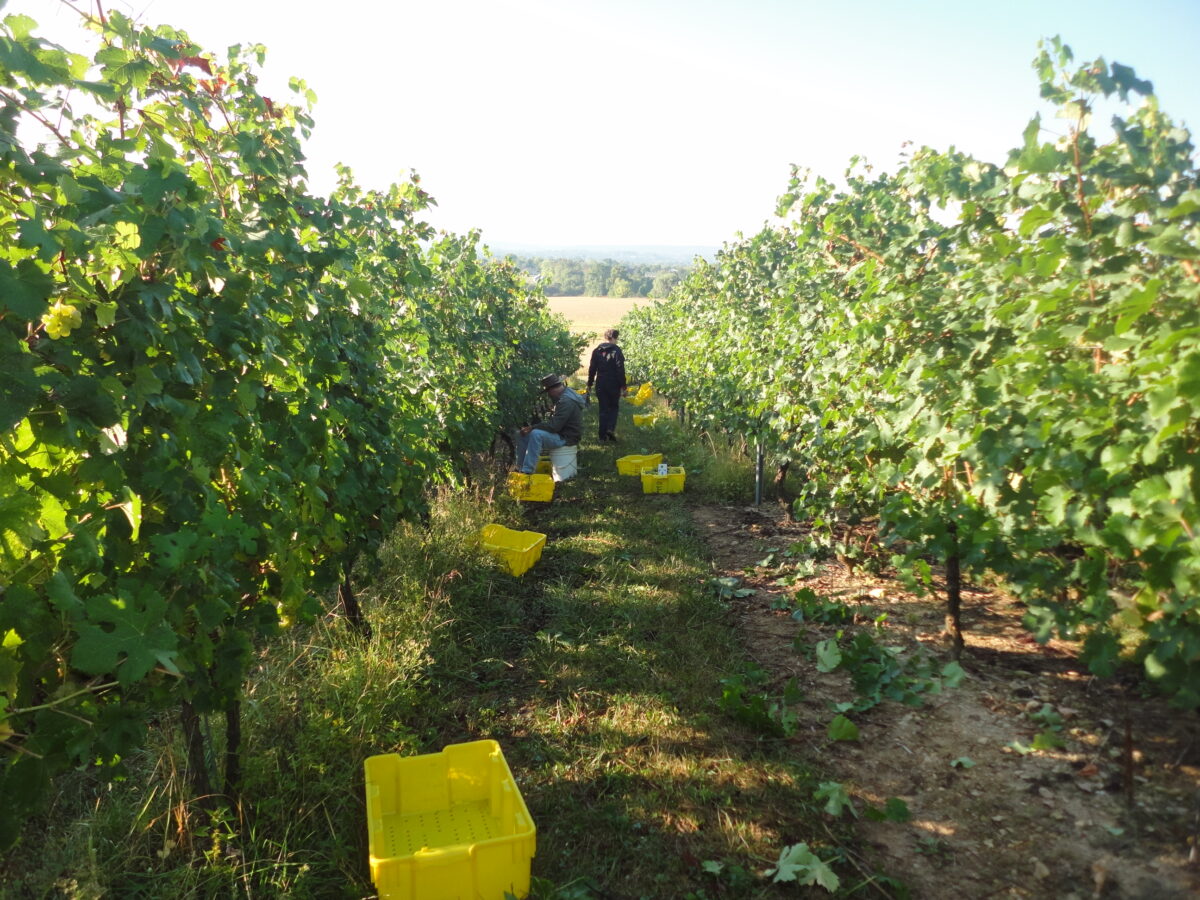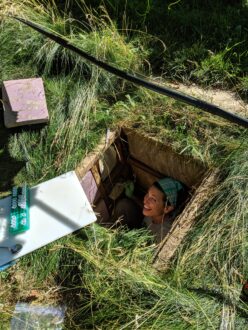Establishing a vineyard requires significant upfront costs, decades of careful management, and significant risk for the grower. Now, new SARE-funded research is helping growers learn how cover crops may stabilize production systems under varying weather conditions while having a limited impact on yields.
Suzanne Fleishman received a Northeast SARE graduate student grant–while studying at the time at Penn State University–to explore how root interaction between grapevines and cover crops impacts grapevines’ response to variable soil moisture availability. With support from advisor Michela Centinari, Fleishman examined the responses of vines on medium- or low-vigor rootstocks to competition from a fescue cover crop planted under the vines. The study revealed that young vine roots grow deeper in relationship to the grass to avoid competition, resulting in an increase in water filtration and soil carbon.
“Increasing species diversity in agriculture can lead to broad-scale environmental improvements, particularly around soil quality,” says Fleishman. “In vineyards, the cover crop grows alongside the grapevines, which means they compete for space, water, and nutrients. Our work was looking at how to better understand exactly how the grass species and grapevines interact belowground, with the goal that growers can still maintain productivity but also get all the environmental benefits.”

While further research is needed, the project contributed to the environmental and economic sustainability of viticulture production in Pennsylvania by helping growers design systems which provide environmental services that can mitigate economic risks over the productive life of a vineyard.
A recent evaluation of SARE projects awarded between 2016 and 2019 found that a long-term perspective within the context of a multispecies ecosystem is key to realizing the potential impact of the findings.
Visit https://www.sare.org/sare-impacts-GNE16-119 for more information on this project’s impact.
Do Cover Crops Stabilize Wine Grape Productivity in a Variable Climate? is part of a series produced by Insight for Action as part of a post-project evaluation of SARE's regional grant programs. For more information visit https://www.sare.org/sare-impacts.
For details on grants and resources available from SARE, visit www.sare.org.
